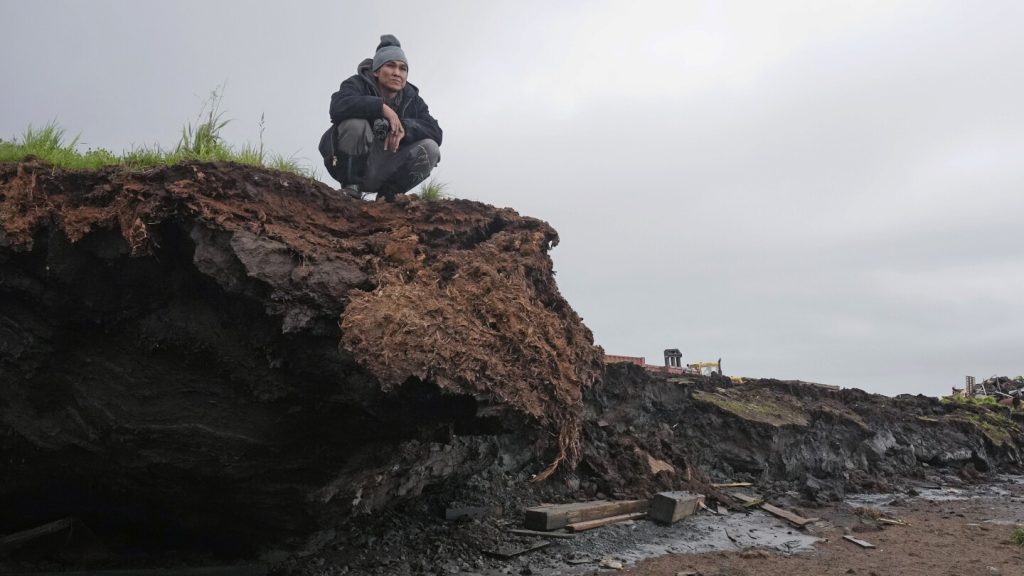In the village of Newtok, Alaska, Ashley Tom grew up learning traditional skills from her family, such as sewing, crocheting, weaving, and speaking the Yupik language. However, due to erosion and melting permafrost caused by climate change, the village has been destroyed, with only a few abandoned homes left standing. In the next few weeks, the last 71 residents will be relocated to Mertarvik, 9 miles away, making them one of the first Alaska Native villages to complete a large-scale relocation due to climate change.
The relocation process has been slow, leaving Newtok a split village with the grocery store and school still located in the old town. The move to Mertarvik has been challenging, with erosion threatening power poles and the need for temporary homes to be set up before winter arrives. Additionally, Alaska is experiencing warming temperatures at a rate two to three times faster than the global average, leading to permafrost degradation and infrastructure damage for many communities across the state.
The Yupik people have a word, “usteq,” which describes the catastrophic threats of erosion, flooding, and thawing permafrost. Many Alaska Native communities are facing similar challenges, with 144 communities experiencing infrastructure damage from climate change. Communities have three options: securing protection, managed retreat, or complete relocation. However, the process of relocation is complex and costly, with estimates ranging from $100 million to $400 million for villages like Kivalina.
The relocation of communities like Newtok and Kivalina is essential to preserve their economic, social, and cultural ways of life. Alaska Native communities are calling for increased federal funding to assist with relocation efforts and mitigate infrastructure damage caused by climate change. Despite the challenges, the relocation of Newtok residents to Mertarvik represents a chance for new beginnings and the preservation of traditions, culture, and subsistence activities in a safer environment.
The residents of Newtok and Mertarvik will soon be reunited after five years of separation, with a new school and amenities planned for the relocated village. The move to Mertarvik offers improved health and sanitation facilities, as well as opportunities for traditional activities like subsistence hunting. While the cost of relocation is high, there is hope for funding from federal programs like the Bipartisan Infrastructure Law to address the urgent needs of threatened Alaska Native communities.
Ashley Tom is optimistic about the future of Mertarvik and the opportunity for residents to build a new community together. Despite the challenges of leaving behind their old homes, the relocation offers a chance for residents to adapt, appreciate the new area, and continue their cultural traditions. The arrival of the last Newtok residents in Mertarvik signifies a new chapter for the community, where they can thrive in a safer and more resilient environment amidst the impacts of climate change.


